Introduction
Financial management is a crucial aspect of running a successful business. Poor financial management can have far-reaching consequences, from reduced profit margins to damaged credit ratings and increased employee turnover. The stability and prosperity of a business depend on its ability to navigate the complexities of financial decision-making.
In this article, we will explore the various effects of poor financial management on businesses and discuss strategies for effective financial management. By taking proactive steps to enhance financial literacy, embrace budgeting and cost control, and engage in regular financial reviews and forecasting, businesses can safeguard their financial health and ensure long-term success.
The Effects of Poor Financial Management on Businesses
The stability and prosperity of a business depend on a delicate balance, heavily influenced by its monetary administration. Poor money management can trigger a cascade of negative outcomes, from eroded profitability to a complete organizational collapse. It is crucial to thoroughly examine and comprehend statements related to money, as they offer a transparent view of revenue, expenses, profitability, and debt levels. Albana Vrioni of Vrioni Consulting highlights the significance of being intimately acquainted with these figures for the future prosperity of any organization.
Indeed, failing to maintain a strong grasp on economic well-being can lead to drastic measures, such as bankruptcy. Associate Professor James Mohs from the University of New Haven advises that bankruptcy should be the last resort, after exploring all other options like refinancing, issuing stock, or tapping into personal networks for support. Recent data show a concerning trend, with insolvencies in the corporate sector climbing to their highest point since the 2009 financial crisis, a signal that could foreshadow an impending recession in the UK.
Furthermore, a structured approach is vital when considering significant company changes such as mergers or acquisitions. The belief that two complementary entities will naturally result in a more successful combined organization doesn't always hold true. The implementation of such strategies requires a thorough process of assessment, planning, and effective communication with teams and customers to support the integration and pivoting efforts.
When confronted with economic challenges, some enterprises resort to loans as a lifeline. The 2022 Small Enterprise Credit Survey indicated that 42% of enterprises with employees obtained loans to navigate economic challenges. However, this path demands caution to avoid falling into a debt cycle without a solid repayment plan.
In brief, the outcomes of disregarding strong fiscal administration practices can be severe, with the potential to drive a business towards insolvency. Leaders must be proactive in their oversight of resources to steer their organizations towards stable and sustainable growth.
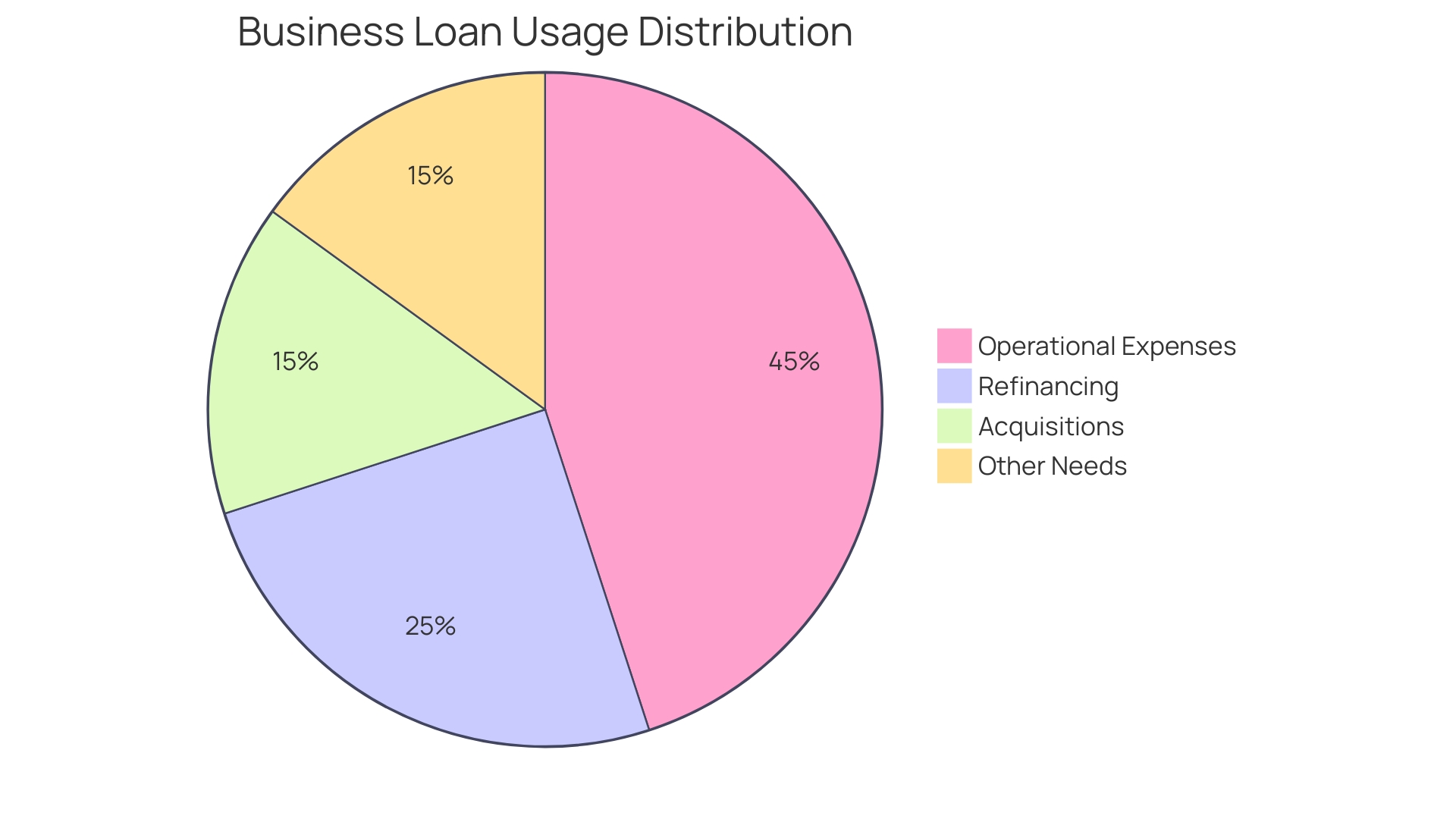
Common Consequences of Poor Financial Management
Companies navigating the unpredictable waters of economic control may encounter a range of unfavorable consequences if they lose their path. A deep dive into the financial performance of a company is often the first step to understanding where things may have gone awry. Analyzing income statements, balance sheets, and cash flow statements can reveal insights into revenue growth, profit margins, cost management, and investment returns. These elements are the compass by which businesses can steer towards informed decision-making and efficient resource allocation.
Organizational agility is another cornerstone of economic well-being. An organized process to assess, decide on, plan for, and implement changes can make the difference between a successful pivot and a misstep that could cost dearly. As Albana Vrioni from Vrioni Consulting emphasizes, a thorough review of financial statements is essential. Understanding your numbers is not just about keeping track of revenue and expenses, but also about comprehending your organization's profitability and debt to ensure its future success.
Furthermore, it's not uncommon for businesses to face the storm of insolvency. With an uptick in bankruptcies, as mentioned by Euronews Business, the highest since 2015, companies from various sectors are finding themselves in choppy waters. The reasons range from poor execution of mergers and acquisitions, which fail to create value, to a lack of preparation for unexpected economic shocks. The Federal Deposit Insurance Corporation (FDIC) underscores the importance of maintaining stability and public confidence in the financial system, which is vital for the economy's overall health.
Companies must also consider the significance of sales skills and the reasoning and advantages behind organizational decisions. Selling is not just for entrepreneurs; it is a critical skill for any industry leader looking to attract customers, secure financing, and forge partnerships.
To prevent the severe outcomes of making bad choices, enterprises need to stay alert and take initiative in their monetary control approaches. By comprehending the economic landscape, embracing organizational adaptability, preparing for unforeseen events, and honing their sales expertise, companies can navigate towards a prosperous and stable future.
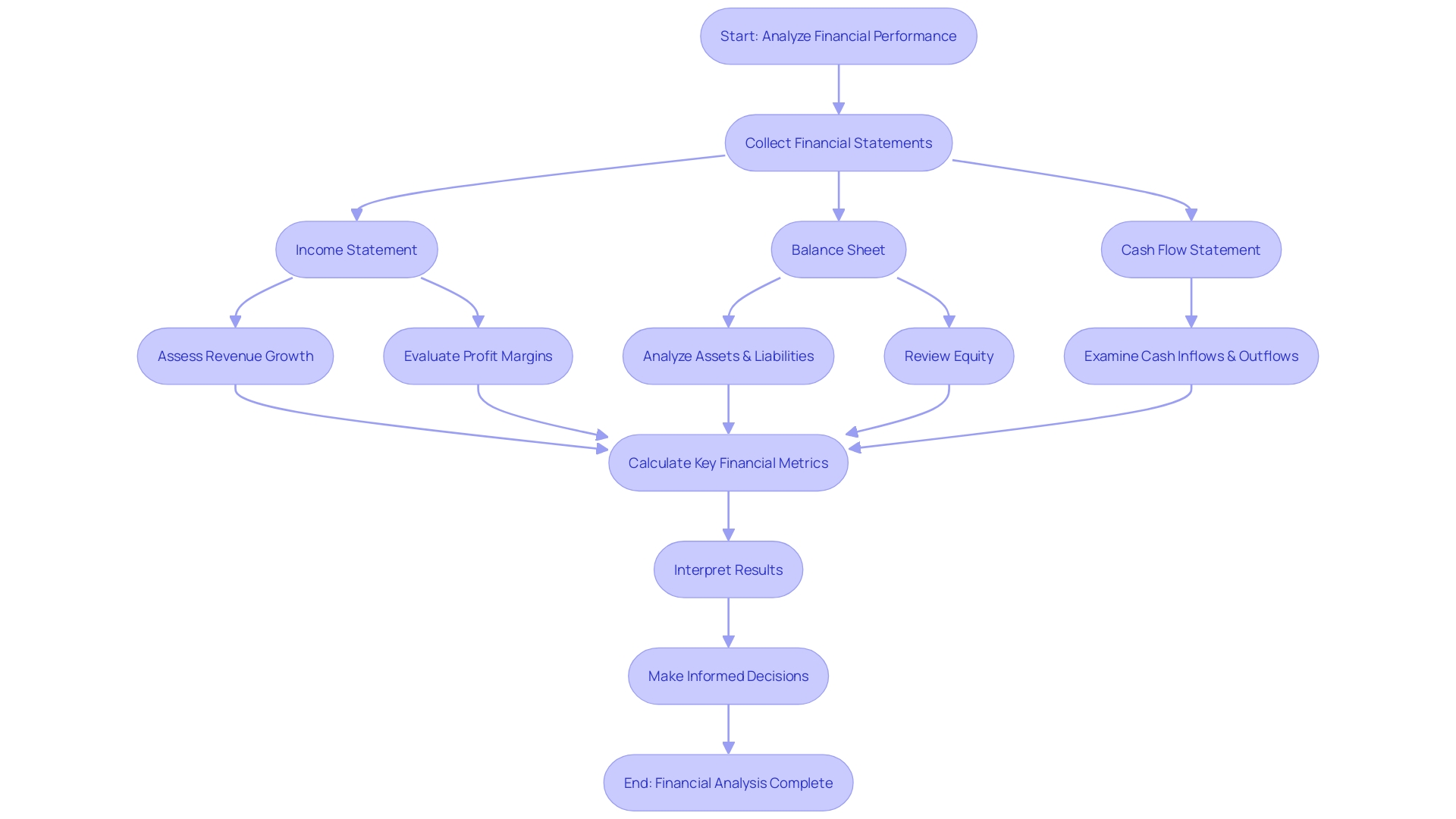
Reduced Profit Margins
Effective management serves as the foundation of any successful business, determining its profitability and long-term viability. One of the most glaring impacts of inadequate fiscal governance is the erosion of profit margins. An organization's profit margin, which is the revenue remaining after all costs have been deducted, is a critical indicator of its financial health. When funds are not judiciously appropriated, it impedes the company's ability to generate adequate revenue while keeping expenses in check. This fiscal imbalance can cause profit margins to shrink, which in turn stifles the organization's capacity to pursue expansion or buffer against fiscal slumps.
Corporate finance strategies emphasize that companies should prioritize value maximization over mere profit maximization. This approach propels every facet of the business, from investment decisions to shareholder returns. Companies particularly poised for growth may opt to accept lower profits or even sustain losses for the sake of bolstering future growth prospects. In this context, efficient monetary control is not only about maximizing immediate profits but also about enhancing the worth of the organization in the long run.
Contemporary case studies exemplify the perils of neglecting this principle. For instance, Southwest Airlines suffered significant operational disruptions due to their leadership's oversight of employees' calls for updated IT systems. Similarly, Pacific Steel's decision to switch to reference-based pricing for healthcare services unearthed substantial overpayments compared to Medicare rates, thus illustrating the need for transparency and careful oversight. These examples underscore the crucial role of astute stewardship in safeguarding against costly oversights that can undermine an organization's profitability and its strategic objectives.
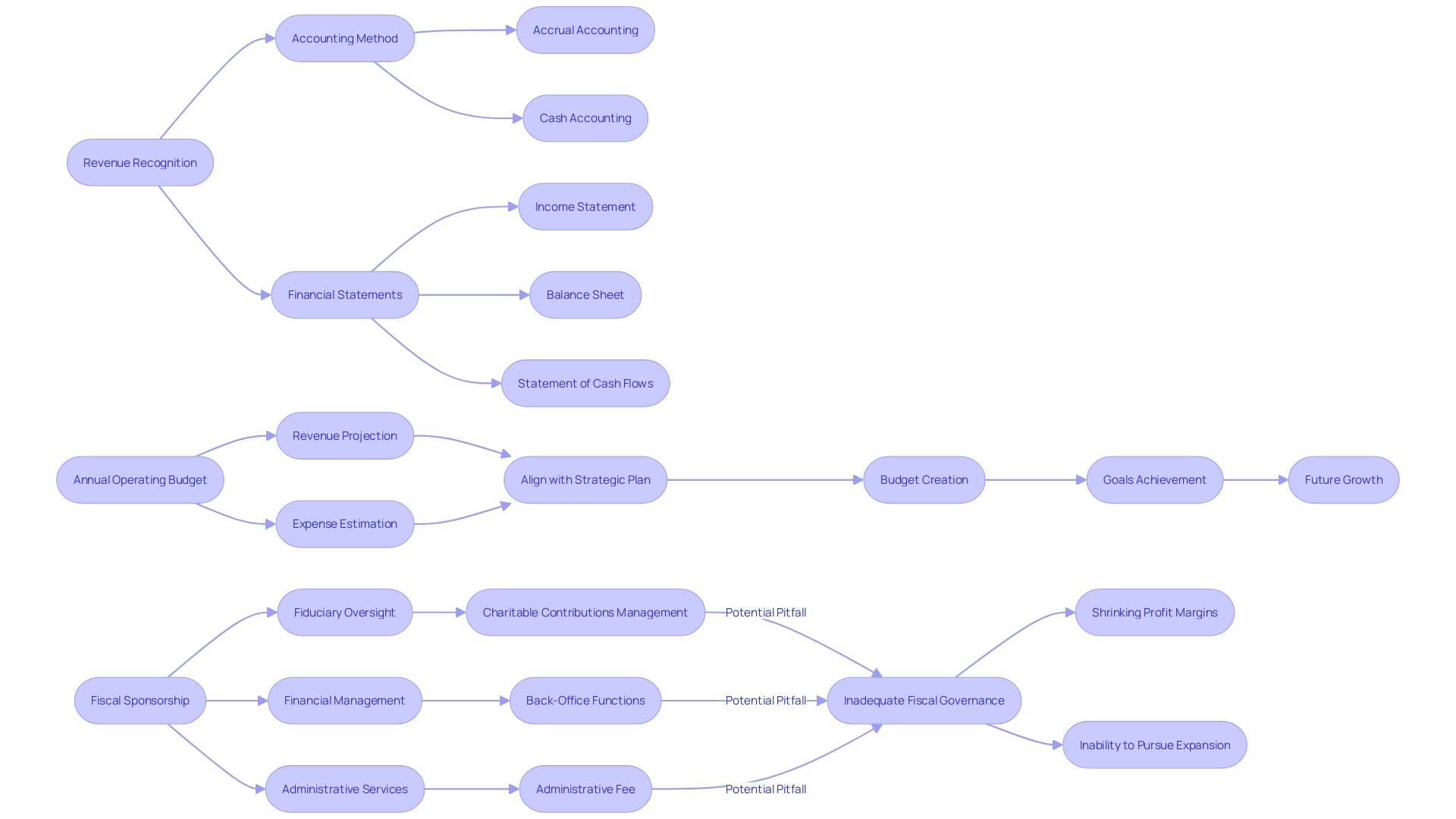
Increased Debt and Financial Strain
A series of debt and monetary stress often comes after from inadequate management of organization funds. When businesses grapple with subpar cash flow management, overleveraging, and defaulting on fiscal duties, the repercussions can be severe. These missteps may lead to a vicious cycle of debt accumulation and financial stress, hindering a firm's creditworthiness, constraining growth prospects, and potentially escalating to the drastic step of declaring bankruptcy.
The tale of two debt collection companies during the pandemic illustrates this point starkly. Credit Corp, through prudent cash flow management, weathered the storm, while Collection House saw its demise. This case serves as a potent reminder that profitability on paper may evaporate without diligent cash flow scrutiny. According to Albana Vrioni from Vrioni Consulting, a profound comprehension of financial statements is not a choice but a necessity for leaders aiming to guide their organizations towards success.
Moreover, current economic conditions signal caution. With interest rates climbing to combat inflation, companies find their debt servicing costs soaring. The Canadian Survey on Business Conditions revealed that one in four businesses can no longer shoulder more debt, citing prohibitive interest rates as a key barrier. This precarious situation is compounded by a troubling trend: a surge in corporate bankruptcies has been reported, with 516 filings as of late September, a number that already eclipses the total filings in the previous two years, according to S&P Global.
Business leaders are urged to acknowledge the seriousness of these monetary pressures. The advice from James Mohs, an associate professor at the University of New Haven, resonates here: knowing when to seek guidance, such as consulting a bankruptcy attorney, is critical after all other avenues have been explored. This strategic foresight is crucial in navigating the intricate terrain of fiscal control and avoiding the severe outcomes of economic mishandling.
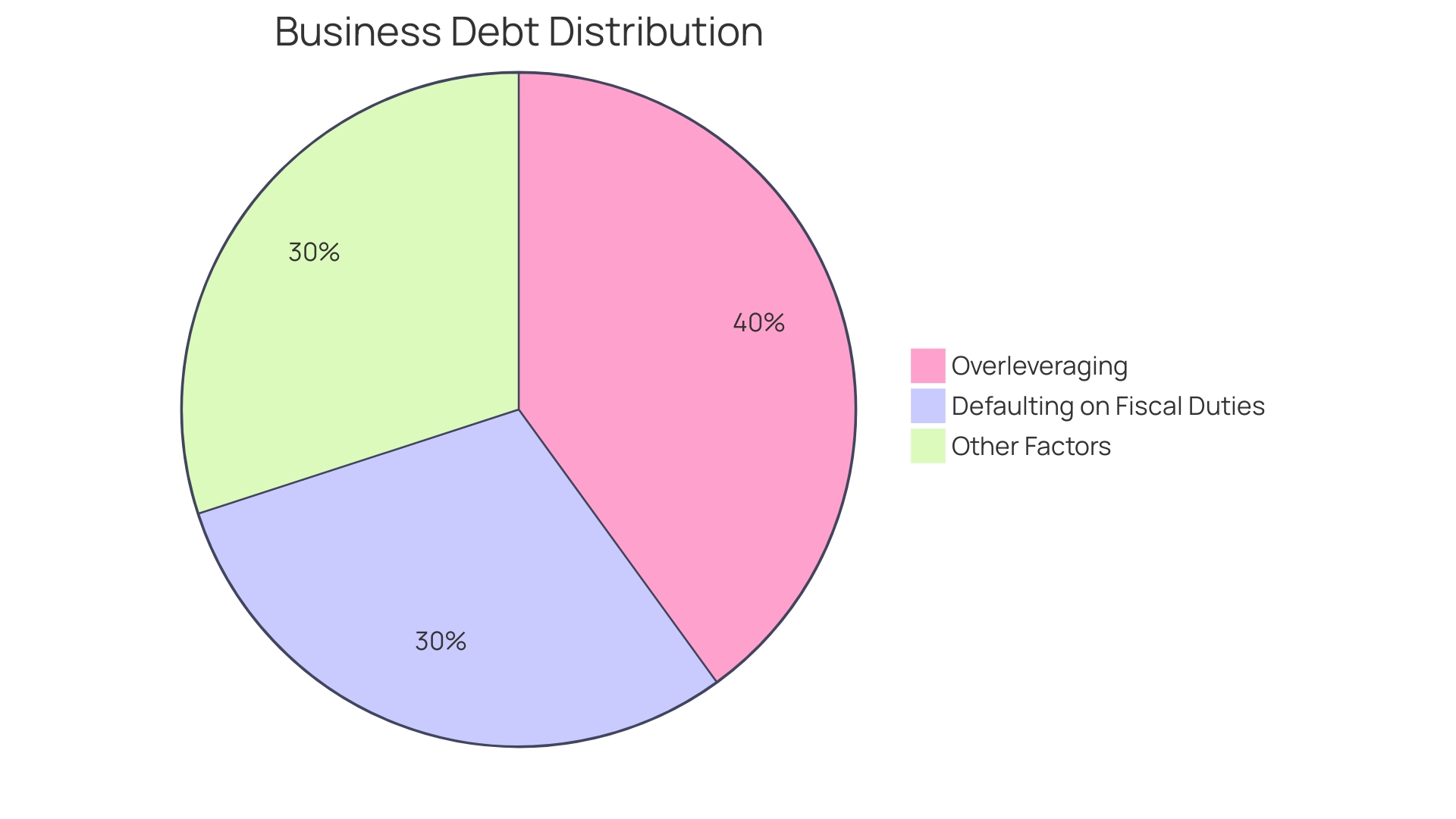
Damaged Credit Rating
A sound credit rating is a cornerstone for any business's financial health, but when financial management falters, the consequences can be severe. Problems like late payments or defaults are not just administrative headaches; they present a significant risk to the creditworthiness of an organization - an essential factor for obtaining loans on favorable conditions or establishing strong relationships with suppliers. The ripple effect of a compromised credit rating is far-reaching, limiting a company's operational flexibility and capacity for growth.
The importance of a company's credit report and score cannot be emphasized enough, as they capture a firm's reliability and adherence to fiscal obligations. This detailed economic portrait is paramount for lenders and suppliers who gauge risk and determine the viability of credit terms. For enterprises navigating economic instability, the figures are striking: the 2023 Small Business Credit Survey discloses that 43% of high-credit-risk owners were refused funding, highlighting the uphill struggle for those with suboptimal credit records.
Furthermore, the consequences of inadequate fiscal management are not limited to credit alone. As bankruptcy statistics rise, indicating the highest figures since 2009, the possibility of companies collapsing grows, with specific industries experiencing severe economic hardship. In this climate, understanding the intricacies of credit reports, staying abreast of eligibility criteria for loans, and exploring alternative financing options become more than prudent—they're imperative for survival and success.
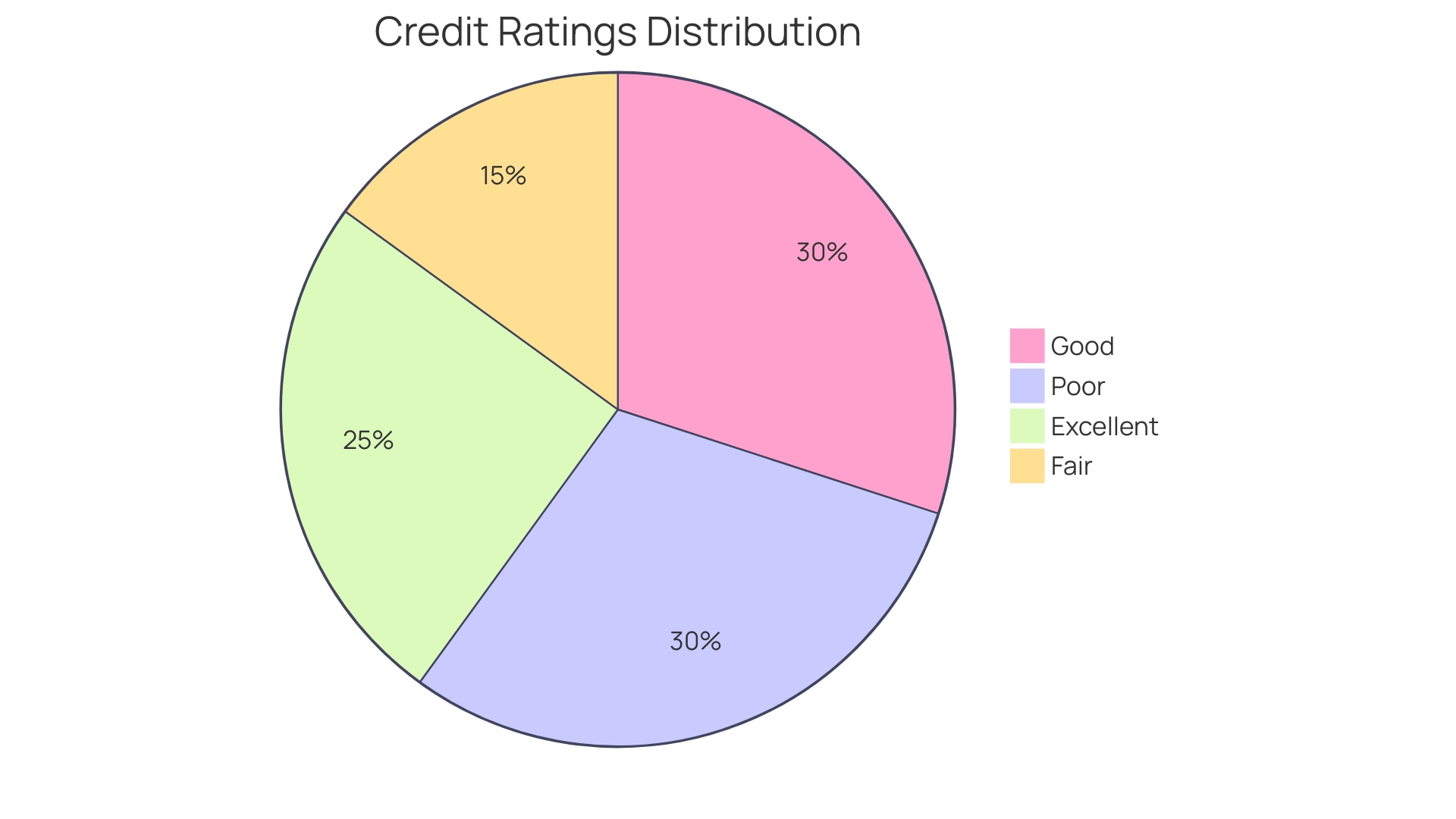
Increased Employee Turnover and Reputation Damage
Financial mismanagement can have a domino effect that cascades beyond the books and into the very culture of an organization, affecting employee morale and the company's external reputation. Confronted with economic pressure, organizations may turn to workforce reductions or wage cuts, unintentionally fostering an environment of uncertainty and distress among staff. Such an environment can significantly increase staff turnover, a trend reflected in the recent statistics from the U.S. Bureau of Labor Statistics, which shows an alarming 47.2% average annual turnover rate across U.S. industries. In sectors like the restaurant industry, the figures are even more stark, with a turnover rate of 6.1% as of November 2023, surpassing the all-industry average of 4.9%. The significant employee attrition rates in the restaurant sector, an industry already struggling with staffing levels 3.6% below pre-pandemic figures, demonstrate the susceptibility of enterprises to the cascading consequences of financial mismanagement.
Furthermore, the influence on a corporation's image can be serious. For instance, Google's recent handling of a significant workforce reduction, involving 12,000 employees, has brought to light the delicate balance between operational necessity and ethical treatment of employees. The resulting dip in employee morale and the scrutiny from the public serve as a cautionary tale of the potential repercussions for a business's standing among customers, partners, and potential investors. Nurturing a positive company culture, as emphasized by the Arbinger Institute, is paramount not only for productivity but also for fortifying the organization against the consequences of monetary mishaps. A strong culture, as Forbes suggests, acts as the glue holding the team together, with shared values and norms guiding the organization through challenging times. Sustaining such a culture is a proactive strategy against the attrition and turnover that can stem from economic turbulence, an approach supported by the World Health Organization's advocacy for mental health programs as a way to sustain productivity amidst adversity.
Key Areas Affected by Poor Financial Management
The negative impact of subpar money management can ripple through numerous facets of a business. For leaders seeking to navigate their organization's monetary health, it is crucial to understand the interplay between strategic decisions and fiscal outcomes. Analyzing financial statements such as cash flow statements, income statements, and balance sheets offers indispensable insights into a company's revenue, expenses, profitability, and indebtedness. Albana Vrioni of Vrioni Consulting emphasizes the importance of leaders being intimately acquainted with these figures to ensure the future success of their enterprise.
Furthermore, an organized approach is crucial when evaluating and implementing pivotal changes in an organization. As reiterated by industry experts, listening, understanding, and analyzing potential opportunities, coupled with effective communication and team engagement, underpin the successful execution of adjustments. This is particularly relevant in the context of mergers and acquisitions, where the anticipated synergies and value creation may not always materialize post-integration.
Recent statistics highlight the seriousness of the situation, with the count of insolvencies in England and Wales reaching a 30-year high in 2023. More than 25,000 company insolvencies were documented in the face of challenges such as skyrocketing costs and interest rates, underscoring the importance of strong fiscal management. In a climate where half of the businesses are taking steps to reduce carbon emissions and artificial intelligence technology adoption is on the rise, maintaining economic sustainability is more important than ever.
Indeed, the home improvement market has witnessed the tangible ramifications of monetary mismanagement. Companies like Safestyle faced insurmountable challenges due to the cost-of-living crisis and soaring operational costs, leading to devastating outcomes for employees and contractors. Such situations emphasize the necessity for proactive measures to strengthen fiscal administration and alleviate the hazards of inadequate fiscal decision-making.
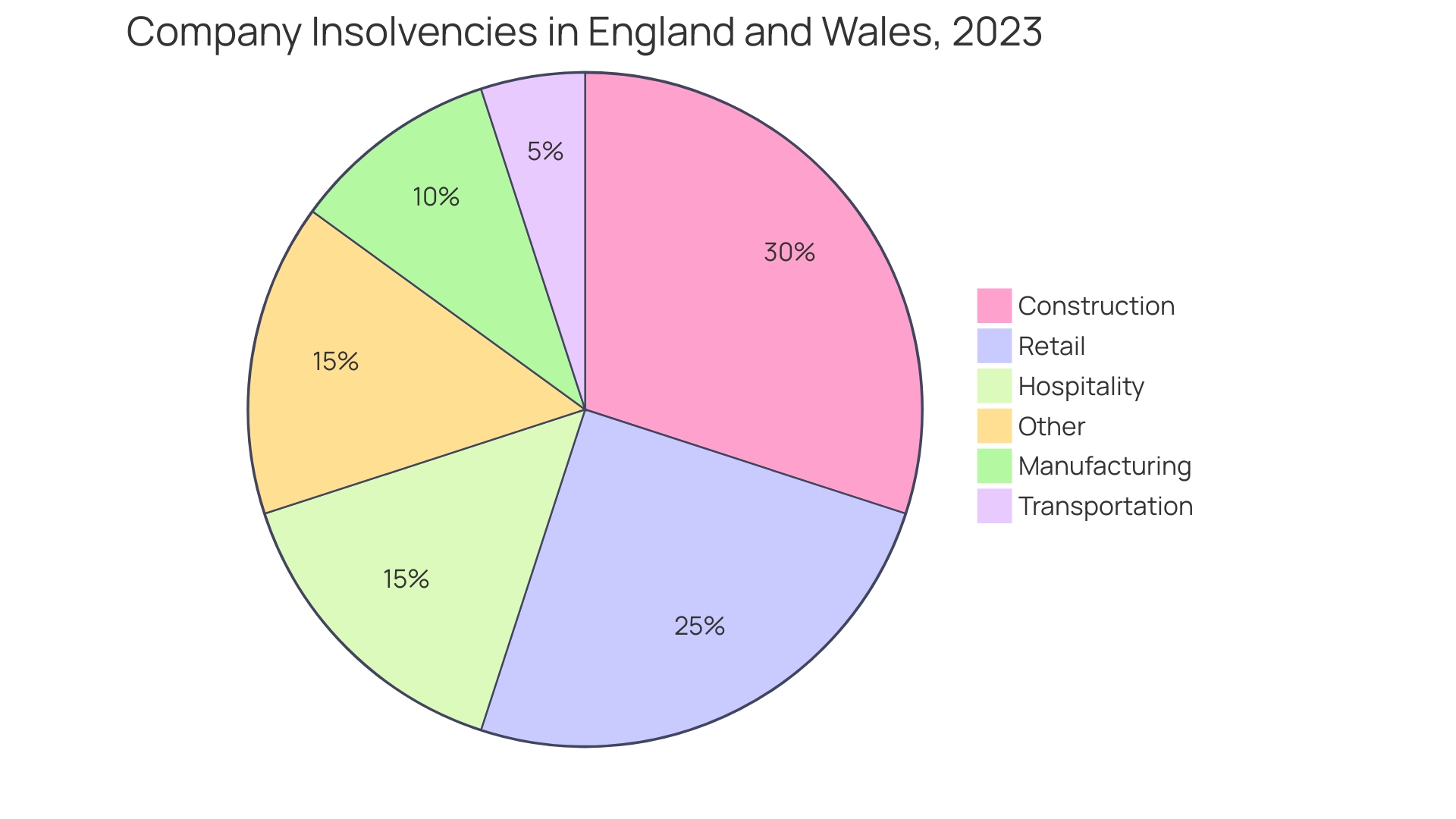
Cash Flow Management
Understanding and managing the intricacies of cash flow is a crucial element in sustaining the well-being of an organization. An in-depth analysis of statements, not just a surface-level review, can uncover pivotal distinctions between cash inflows, cash outflows, accounts receivable, and accounts payable. Each element plays a unique role in the consistency and certainty of cash flow. Immediate and certain cash inflows, for example, are fundamental to the company's liquidity. On the other hand, inadequate fiscal administration practices, like disregarding comprehensive evaluations of all monetary records or mishandling operational funds, can trigger cash flow disturbances. These disruptions might manifest as insufficient funds to cover expenses or delays in payments, which can stifle everyday operations and jeopardize long-term growth and survival.
As expressed by Albana Vrioni of Vrioni Consulting, a common pitfall in cash flow management is the absence of thorough statement analysis. Understanding a corporation's revenue, expenses, profitability, and debt through these documents is crucial for informed leadership and the ongoing success of the business. Incorporating expert guidance and creating a dynamic cash flow projection can provide valuable insights for decision-making, helping to navigate challenges. Moreover, effective working capital management—striking a balance between accounts receivable, accounts payable, and inventory—is integral for ensuring the availability of funds to meet short-term obligations. In the end, by becoming intimately familiar with immediate cash flow trends, leaders can make monetary choices that support the company's current needs while also promoting sustainable progress through strategic forecasting.
Budgeting and Cost Control
Efficient management is the foundation of any successful business, and at its core lies the careful practice of budgeting and cost control. Without careful attention to money management, organizations can easily fall into the trap of overspending, squandering resources, and losing grip on fiscal discipline. Such mismanagement can drain valuable financial reserves, ultimately stunting profitability and growth potential.
Developing a strong budget for a company goes beyond entering numbers into a spreadsheet; it's a strategic plan that represents the company's goals and operational facts. It requires a keen understanding of cash flow, the lifeblood of any enterprise, to ensure that the inflow and outflow of funds are balanced to meet company obligations and facilitate expansion. Using a comprehensive budget template can illuminate a clear path for expenditure, investment impact, and prioritization of resources.
The dangers of ignoring a structured budgeting process are shown by the recent turmoil experienced by Wowza customers, who encountered unexpected price increases after the acquisition. Such surprises can destabilize a business's monetary strategy, underscoring the significance of preparing for market fluctuations and updating budgets to adapt to changing business landscapes.
Moreover, the hidden costs that erode the efficiency of valuable resources, such as data scientists bogged down by mundane tasks or operating in siloed IT environments, highlight the necessity of streamlining operations. Only a fraction of data models reach production, leading to wasteful spending on unproductive activities. This calls for a vigilant approach to budgeting that accounts for both direct and indirect costs, ensuring that every dollar spent is propelling the organization forward.
Experts in finance advocate for methods like the Avalanche and Snowball techniques to systematically reduce debt, thereby reinforcing the importance of strategic decision-making. Likewise, organizations such as The Laundry Basket have had to modify their pricing in reaction to increasing expenses, a step that can only be taken with a solid comprehension of the economic position of the enterprise.
Ultimately, the health of a business depends on the ability to manage cash flow meticulously, examine statements regularly, and apply cost-cutting measures judiciously. The objective is not just to endure the fiscal challenges but to prosper, making informed decisions that enhance long-term fiscal resilience and operational efficiency.
Risk Assessment and Mitigation
Mitigating financial risk is not just about recognizing potential pitfalls; it also involves a proactive approach to manage and counteract these risks. Consider the shift from traditional energy sources to wind power, which comes with its own set of uncertainties, including fluctuations in supply and the necessity for substantial investments in energy storage. To navigate such complexities, companies are implementing climate risk strategies, utilizing vulnerability assessments to pinpoint current and future risks under various climate scenarios. Risk analytics serve as a crucial tool in this process, aiding organizations in understanding the potential impact of acute hazards, such as extreme weather events, and chronic stressors like sea-level rise.
The evolving landscape of interconnected risks, as revealed by a survey with nearly 3,000 participants across diverse industries and regions, highlights the need for a dynamic risk management approach. It's no longer sufficient to address individual challenges; the collective nature of risks, propelled by rapid changes in the macroeconomic environment, demands a comprehensive transition plan. Businesses must adapt, moving beyond rigid data and checkbox approaches, to meet the shifting climate disclosure requirements and build resilience for long-term success in a net-zero future.
The digital realm presents its own threats, with cyberattacks on the rise, targeting not just hospitals during the pandemic but enterprises at large, threatening to undermine financial stability and erode trust. The need for robust emergency plans and the agility to adapt to customer needs is paramount in this climate of heightened risk.
As enterprises struggle with these diverse risks, they must acquire the ability to foresee, comprehend, and control them efficiently. This involves a multifactor assessment of cyber risk, considering the likelihood of an attack, the vulnerabilities within the organization, and the potential consequences of a breach. Such comprehensive assessments are essential in closing the gaps in risk mitigation and ensuring a resilient operation.
Amidst these challenges, leaders are turning to expert guidance, like that found in 'The Leader's Guide to Managing Risk,' which provides actionable steps to build reliability and resilience into organizational culture. Faced with climatic disruptions that have already resulted in substantial economic losses, enterprises must possess the essential knowledge and resources to navigate a progressively fragile environment.
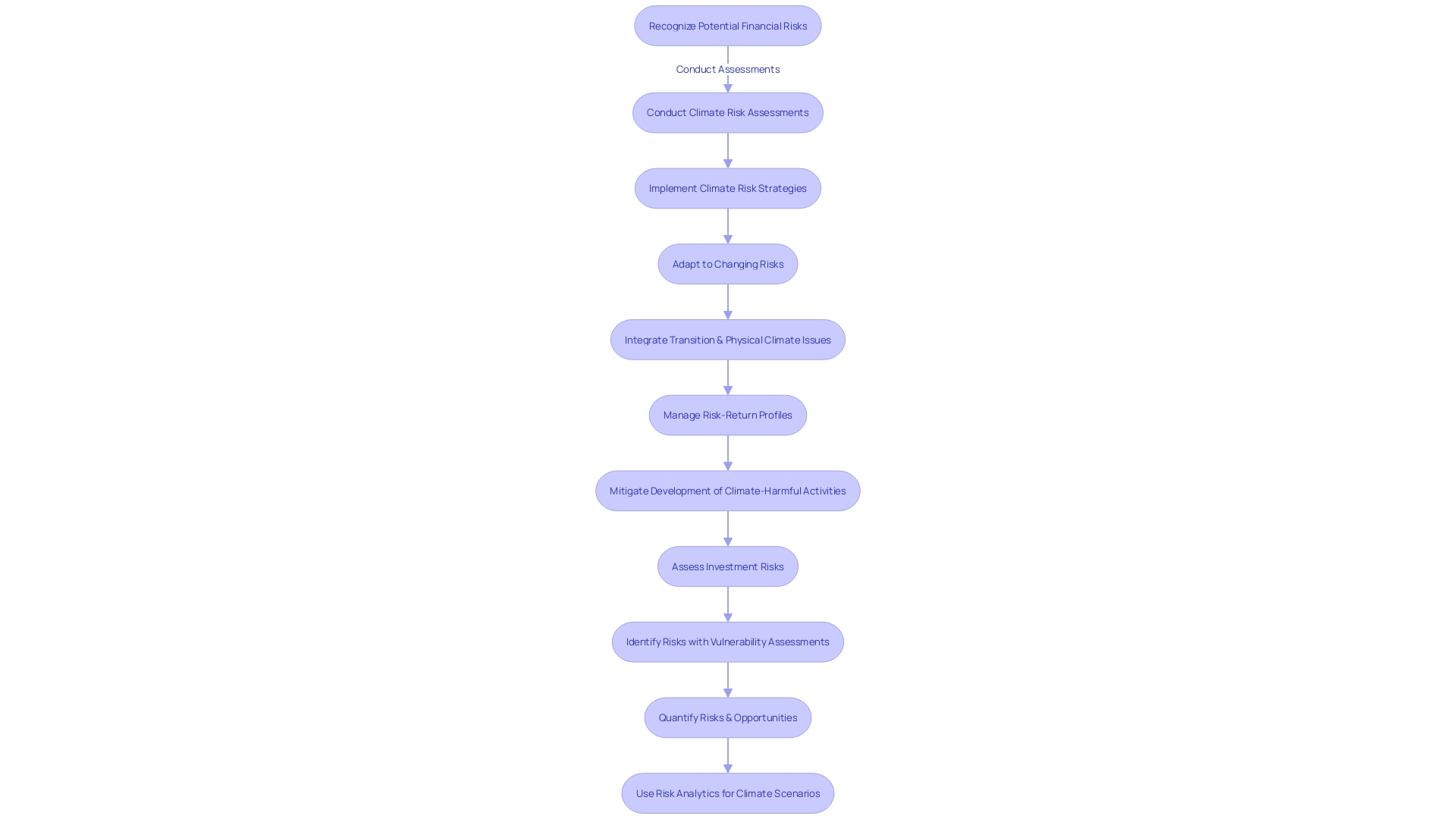
Strategies for Effective Financial Management
Financial stability is the backbone of a thriving business, but achieving it requires more than just meticulous bookkeeping. Intelligent management strategies are crucial to navigating through economic turbulence and ensuring the longevity of an organization. Here are several approaches that can bolster a company's financial health:
- Embrace digital transformation in the financial sector by utilizing dynamic IT services. The increasing acceptance of digital technologies by consumers demands that services be streamlined, personalized, and on-demand. For instance, companies like Nets have effectively tailored their digital payment solutions to meet diverse market needs, a move that has been instrumental in their sustained success over five decades.
Diversification is another pillar of sound money management. This involves allocating investments across a variety of asset classes, such as stocks, bonds, and real estate, and within those classes, across different industries and regions. A diversified portfolio can cushion against market volatility and align with long-term objectives, as emphasized by advisors in the wake of recent bank distress incidents.
- Understanding the importance of emergency funds has been underscored by recent global events. Financial planners now recommend that individuals and businesses go beyond the traditional six-month expense coverage, ensuring a more robust safety net in the face of unforeseen economic downturns.
Consistently reviewing and understanding all statements related to money is a crucial part of effectively managing cash flow. Leaders must have a deep understanding of their organization's performance metrics, as this knowledge is a crucial factor in determining future success, according to Albana Vrioni of Vrioni Consulting.
- Finally, aligning monetary approaches with the organization's overarching objectives is crucial. This implies that project portfolio management should mirror the organization's vision, mission, and long-term goals, ultimately guaranteeing that monetary choices are strategically focused and promote enterprise growth.

Comprehensive Budgeting
A solid business budget is the compass that guides a company's monetary journey. It's a meticulous financial blueprint that details the expected revenue and expenses, serving as a roadmap for organizational spending. For instance, successful asset management planning in municipalities like Thunder Bay, Ontario, demonstrates the power of detailed budgeting in enhancing city services. Likewise, enterprises must establish comprehensive budgets that mirror the complete range of project costs, encompassing direct production expenses as well as frequently disregarded elements such as publicity, insurance, and payroll taxes.
The process of budgeting should not be static; it must adapt to the realities of the company, incorporating real-time data and market trends. For example, the energy sector's budgeting can be complex, involving advanced planning for energy purchases and understanding market commitments. Technology investments, too, require careful planning to ensure they drive operational efficiencies.
In today's dynamic economic landscape, one innovative approach to budgeting is zero-based budgeting (ZBB). Championed by industry leaders like Michael Grove of HotStats, ZBB involves starting from scratch each year, requiring a justification for every expense and an analysis of each function's needs and costs. This method contrasts with traditional budgeting, which often relies on the previous year's figures.
To strengthen the bottom line, it's crucial for companies to have access to comprehensive monthly performance data, which allows them to compare themselves to competitors and obtain in-depth insights into revenue streams and operational expenses. Fundamentally, a clearly defined budgeting procedure, influenced by past and market information, is essential for companies to navigate monetary intricacies, guarantee cash flow, and allocate resources strategically.

Regular Financial Reviews and Forecasting
To maneuver the intricate monetary landscape, companies should conduct regular economic assessments and forecasts. An in-depth exploration of statements like income statements, balance sheets, and cash flow statements provides a panoramic view of an organization's economic status. This is not merely an exercise in number-crunching; it is an essential strategic assessment that aligns with Albana Vrioni's advice on the necessity of knowing your numbers to steer your business towards success.
Evaluating your company's performance against initial benchmarks shows whether targets have been achieved, surpassed, or not met, and why. An analysis of revenue growth, profit margins, cost management, and investment returns is indispensable. Moreover, strategic planning should be an annual ritual, evaluating your market position against competitors and adjusting goals as needed.
In creating monetary predictions, past data is a valuable resource, offering context and clarity. Gathering a minimum of three years of sales records, expense reports, and statements reveals seasonal fluctuations, long-term trends, and outliers. For newer enterprises, any accessible data can establish the foundation for a reality-based projection.
The example of TBC Bank, which evolved from a local business center to Georgia's leading institution, illustrates the power of transitioning to flexible, value-driven operations. Meanwhile, the downsides of inadequate money control, as captured by the 'SISO' (Stuff In, Stuff Out) phenomenon, emphasize the outcomes of overlooking regular reconciliation, invoicing, and tracking of accounts receivable.
Additionally, New Zealand's economic indicators, such as the annual current account deficit standing at 7.6% of GDP, underscore the significance of vigilance. By continuously monitoring and adjusting to economic realities, businesses can proactively address issues and seize opportunities for growth.

Proactive Risk Management
Staying ahead of financial risks is not a passive activity; it requires active and ongoing vigilance. It's about more than just having a plan in place; it's about the continuous monitoring and updating of risk management protocols to address evolving challenges and opportunities. For example, as enterprises focus on sustainable practices, like the transition from carbon to renewable energy sources, they must also recognize and get ready for the inherent volatility—such as the requirement for significant investment in energy storage solutions. This proactive approach is supported by thorough risk analytics, which can predict how climate-related hazards, like extreme weather conditions or long-term stressors like rising sea levels, could affect the business.
In the current hard insurance market, projected to extend into 2024, and with the backdrop of a shifting climate landscape, companies must adapt by understanding their network boundaries, system age, management, and geographic locations. Aligning with industry leaders’ insights, such as those from K. Scott Griffith in 'The Leader's Guide to Managing Risk,' can prove invaluable. His work emphasizes the need to build resilience by anticipating and managing risks effectively. Moreover, the reality of managing risks is diverse, extending beyond traditional financial sectors and cybersecurity, to encompass a range of industries and risk types.
Recent data indicates that while more than 50% of enterprises are not worried about the influence of climate change, a growing number are implementing measures to reduce their carbon footprint, such as transitioning to LED lighting. Moreover, the utilization of artificial intelligence technology in operational activities is increasing, emphasizing the significance of getting ready for technological progressions as a principal catalyst for assessing risk landscapes.
Indeed, the aviation industry exemplifies this commitment to proactive risk management. With safety as a non-negotiable priority, continuous improvement and collaboration across stakeholders are vital. The IATA Annual Safety Report serves as a testament to the industry's dedication to safety and provides a wealth of data to inform and direct safety efforts. Therefore, by actively identifying potential risks and implementing robust risk mitigation strategies, businesses can safeguard themselves against the unforeseen, ensuring a resilient operational future.
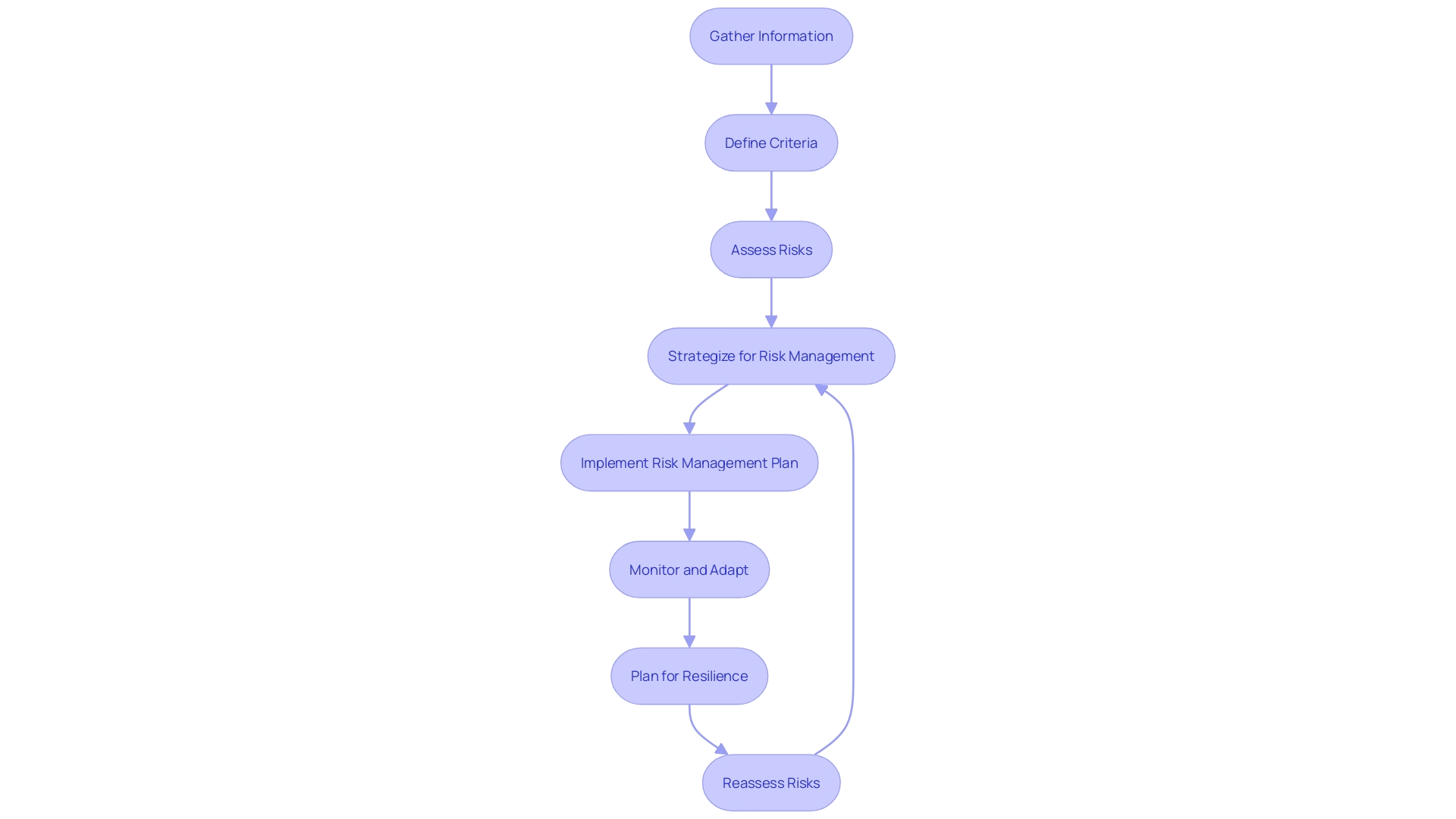
Financial Literacy and Team Involvement
Promoting a culture of monetary expertise within an organization is crucial to improving its fiscal well-being. Through dedicated training, employees acquire a deeper understanding of monetary concepts, resulting in more cautious choices. Furthermore, through involving different departments in dialogues and decisions regarding finances, a collective comprehension of the organization's economic framework is nurtured, fostering cohesion and well-informed tactics. For example, companies such as Nets have tackled intricate data presentation obstacles by prioritizing clarity and accessibility, emphasizing the significance of understandable information. Similarly, initiatives like the Interactive Museum of Economics in Mexico City demonstrate innovative ways to educate on monetary matters, contributing to a broader appreciation of economic principles. This collaborative and educational approach is reinforced by case studies such as Journey Bank's proactive measures to mitigate elder fraud, highlighting the tangible benefits of money management in addressing specific issues. In an era marked by economic uncertainty, where a staggering 92% of employees report financial stress affecting their overall well-being, the imperative to cultivate financial literacy and involve stakeholders in financial decisions has never been greater.
Conclusion
In conclusion, poor financial management can have severe consequences for businesses. It can lead to reduced profit margins, increased debt and financial strain, damaged credit ratings, increased employee turnover, and reputation damage. These effects can undermine the stability and long-term viability of a business.
To mitigate these risks, businesses should focus on strategies for effective financial management. This includes embracing budgeting and cost control, as well as conducting regular financial reviews and forecasting. By carefully managing cash flow, businesses can ensure liquidity and allocate resources strategically.
Comprehensive budgeting is crucial for aligning expenditures with business objectives and adapting to market fluctuations.
Proactive risk management is also essential. Businesses should assess and mitigate financial risks, such as fluctuations in supply or cyberattacks, by implementing comprehensive risk management protocols. This involves continuous monitoring and updating of risk analytics to address evolving challenges and opportunities.
Furthermore, fostering financial literacy within the organization and involving employees in financial decisions can enhance the overall financial health of the business. By providing training and promoting financial dialogues, businesses can empower their teams to make informed financial choices and cultivate a shared understanding of the company's financial context.
In summary, effective financial management is vital for the stability and prosperity of a business. By implementing these strategies, businesses can safeguard their financial health and ensure long-term success in a dynamic and challenging economic landscape.
Learn more about our effective financial management strategies.




